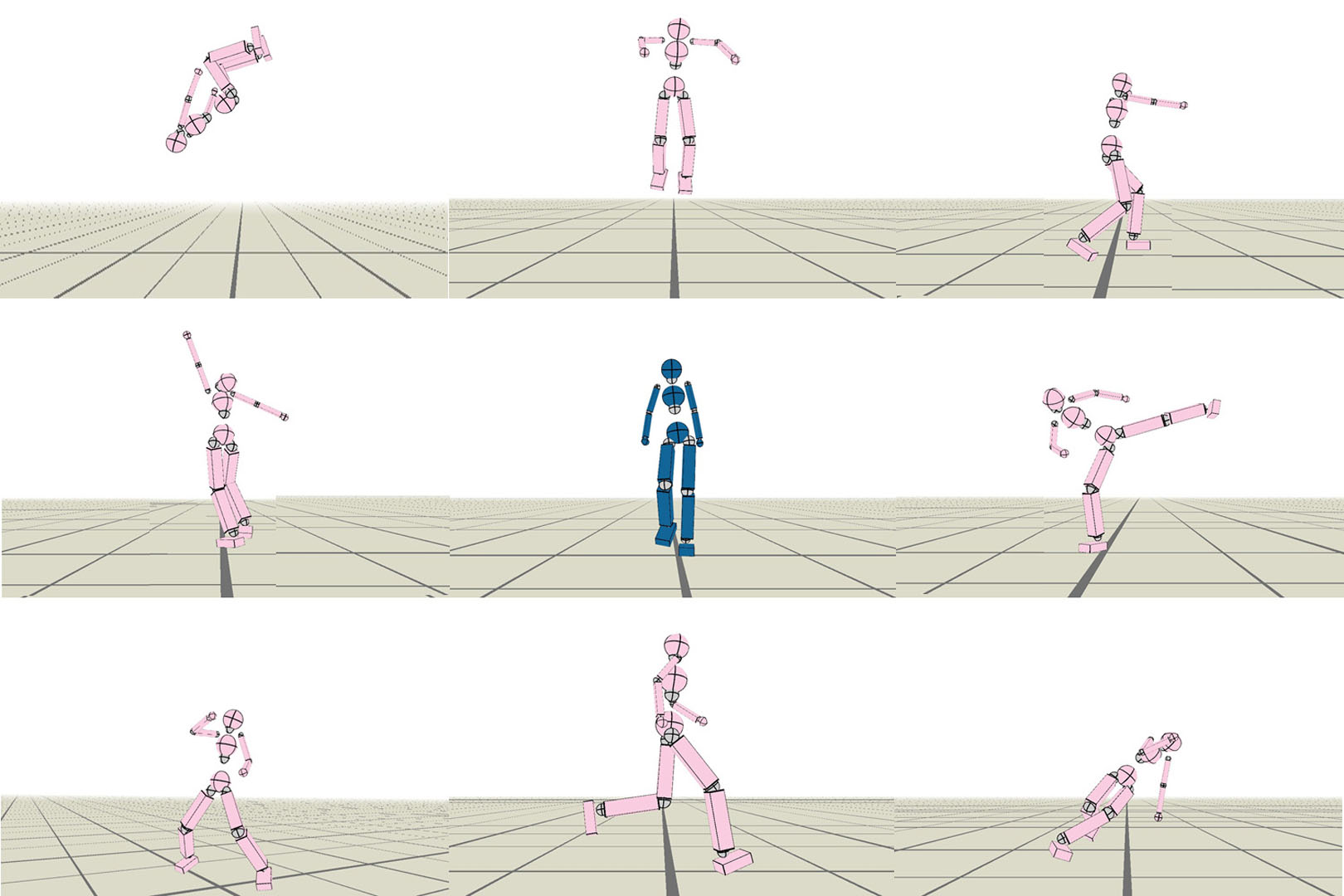“Physics-based Character Control Using Conditional GAIL” by Lee and Lee
Conference:
Type(s):
Entry Number: 11
Title:
- Physics-based Character Control Using Conditional GAIL
Presenter(s)/Author(s):
Abstract:
The goal of our research is to control a physics-based character that learns several dynamic motor skills using conditional Generative adversarial imitation learning(GAIL). We present a network-based learning algorithm that learns various motor skills and changing motions between the motor skills from disparate motion clips. The overall framework for our controller is composed of a control policy which generates a character’s behavior, and a discriminator which induces the policy to produce proper motions from a user’s commands. The discriminator and the policy take outputs from each other as input and improve each performance through an adversarial training process. Using this system, when a user commands a specific motion to the character, the character can design a motion plan to perform the motion from the current pose. We demonstrated the effectiveness of our approach through examples with an interactive character that learns various dynamics motor skills and follows a user command in the physics simulation.
References:
Jonathan Ho and Stefano Ermon. 2016. Generative adversarial imitation learning. Advances in neural information processing systems 29 (2016).Google Scholar
Augustus Odena, Christopher Olah, and Jonathon Shlens. 2017. Conditional image synthesis with auxiliary classifier gans. In International conference on machine learning. PMLR, 2642–2651.Google Scholar
Xue Bin Peng, Ze Ma, Pieter Abbeel, Sergey Levine, and Angjoo Kanazawa. 2021. Amp: Adversarial motion priors for stylized physics-based character control. ACM Transactions on Graphics (TOG) 40, 4 (2021), 1–20.Google ScholarDigital Library




